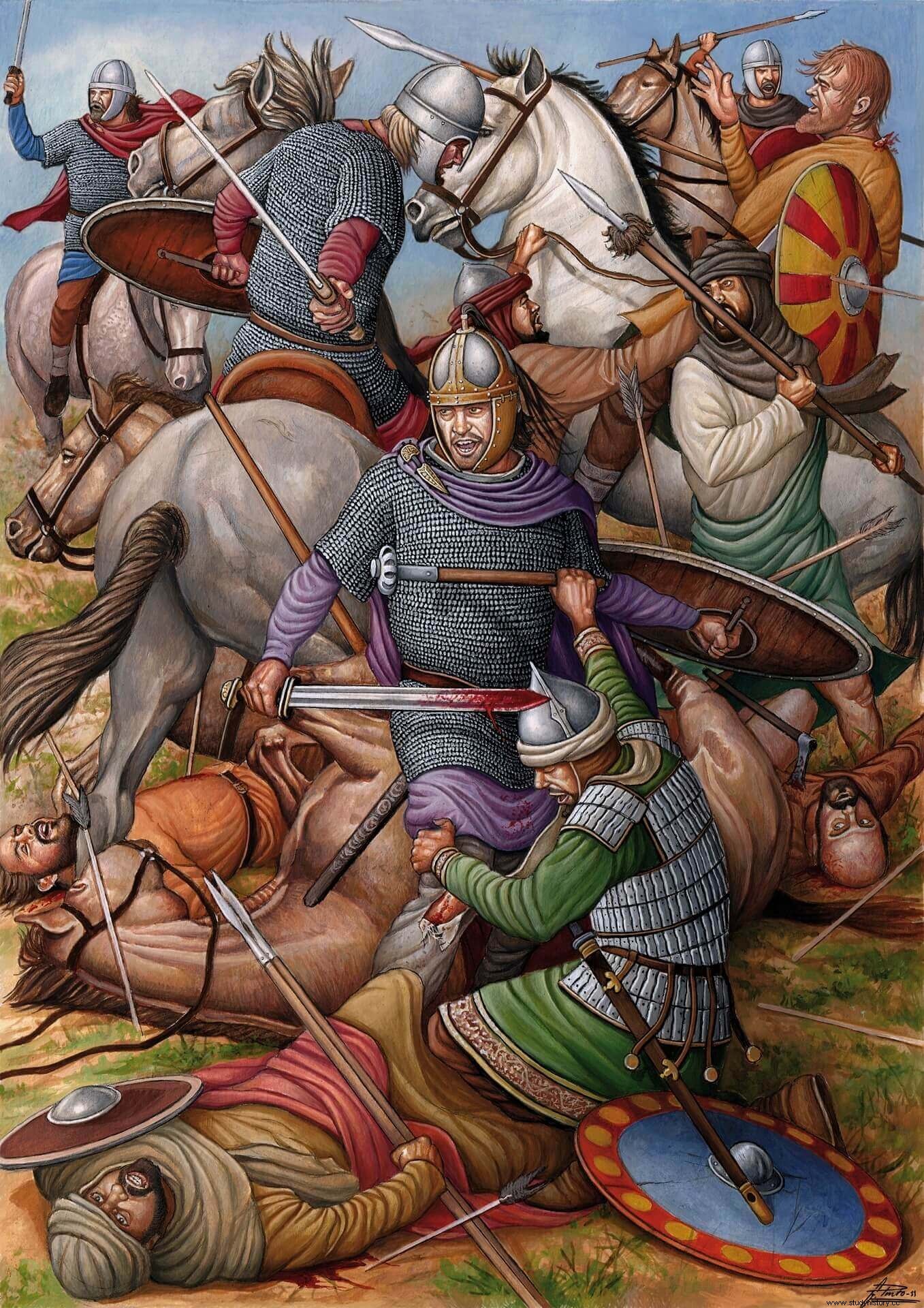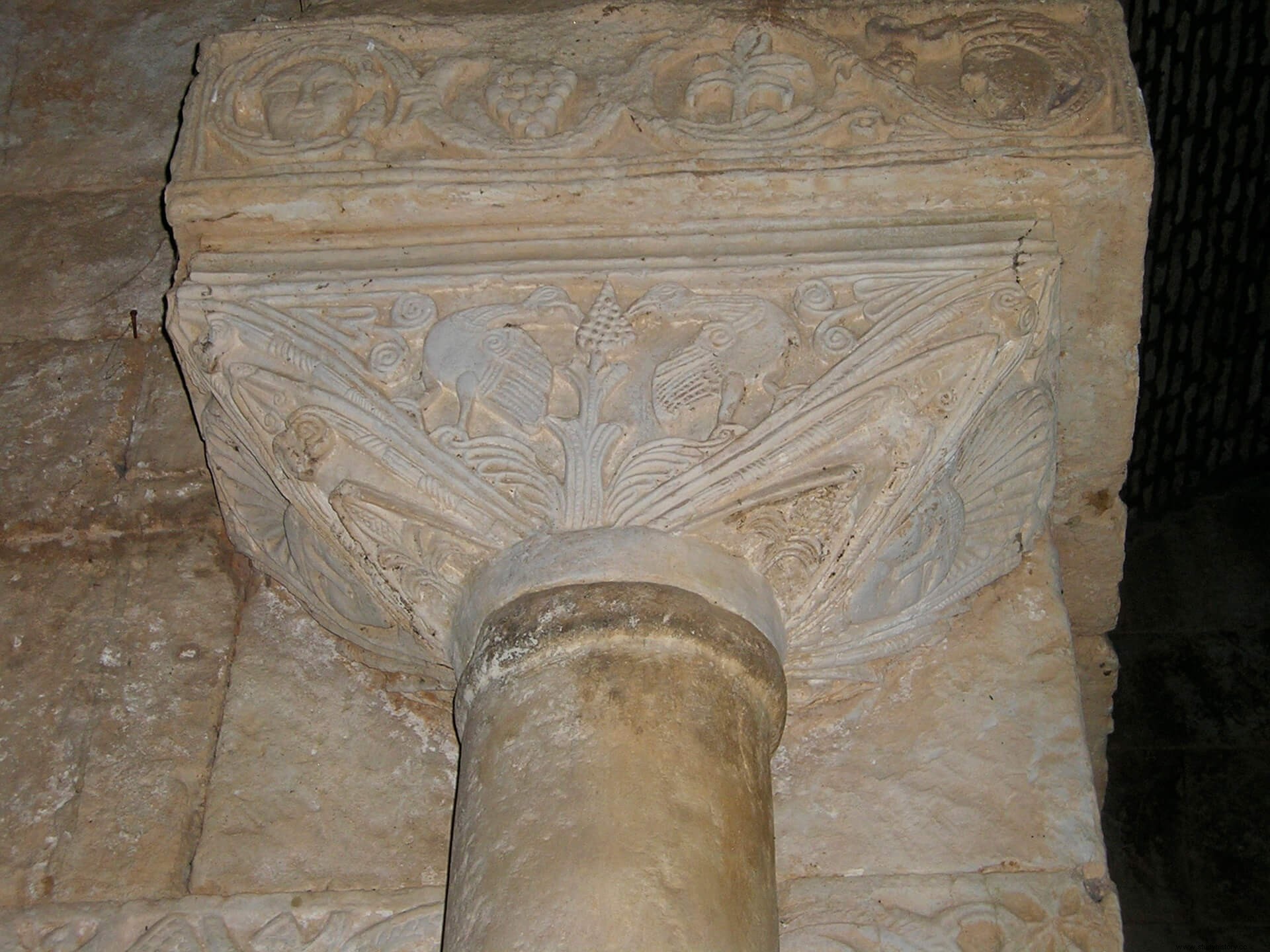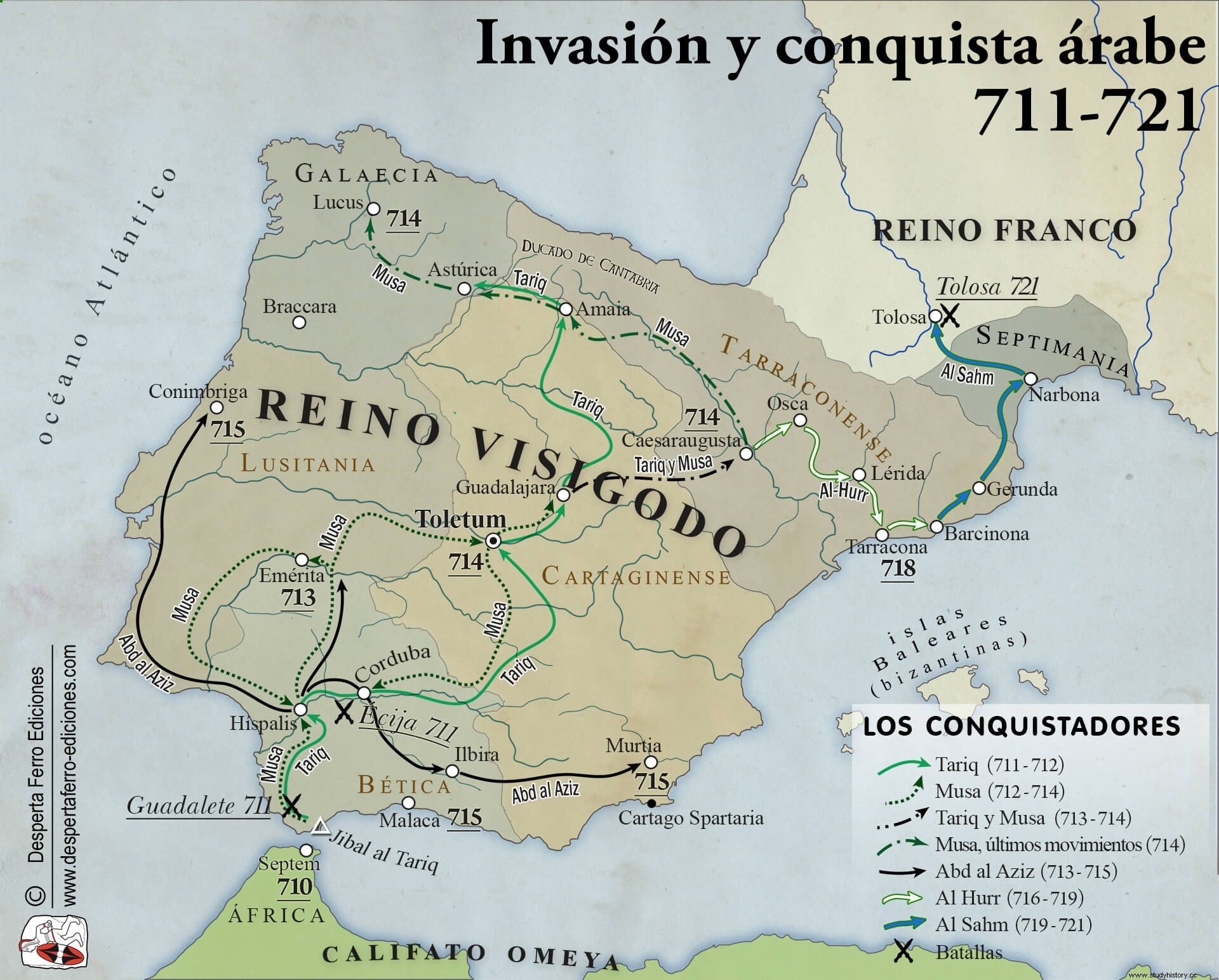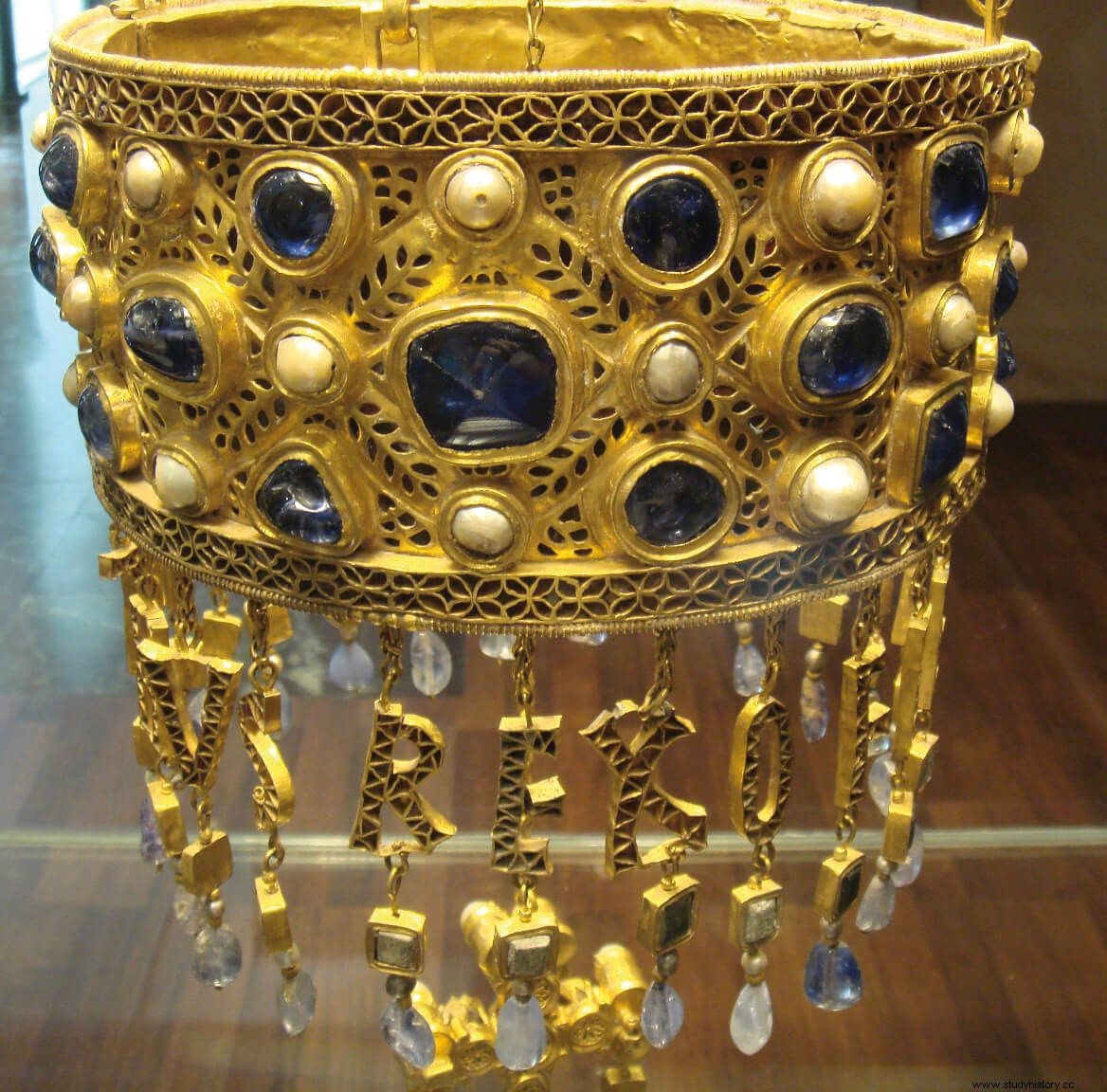
The Christians who lived on the Peninsula during those centuries were very aware of the importance of the event and ended up encompassing everything that happened, their explanations and some things they imagined in what was called “the loss of Spain” . To generate an explanation, the ecclesiastics turned to the example provided by the kingdom of David, Solomon and his descendants. Within this understanding, divine punishment was insisted on against the behavior of the last Visigothic monarchs:it was about pointing out how God can punish the kingdoms whose monarchs sin, as already happened in biblical Israel. In the Asturian chronicles –written in northern lands at the end of the 9th century– Witiza's sin of lust and its continuity with King Rodrigo were underlined. At an imprecise moment, although relatively early, the legend incorporated elements of great attraction, especially within an aristocratic perception of intranobiliary relations and, specifically, of those of these groups with the king. A motif was built on the family honor wounded by the violence exerted by the monarch on the daughter of an aristocrat –Florinda or La Cava– who, thus freed from his fidelity, would be legitimized to take revenge on the king and introduce the Muslims and destroy the kingdom. This event was linked not to the person of Witiza, but to that of Rodrigo, since that was when the invasion had taken place, so it would be his sin that would cause the punishment. Obviously, all these elaborations tried to find a reason for a fact that seemed incomprehensible to them :the rapid destruction of a Christian kingdom at the hands of people of another religion, a victory to which a dramatic component was added, since news of a betrayal already appeared in the sources closest to the events.
The Muslim expansion
The whole set of events revolves around a decisive phenomenon. The Muslim expansion had begun in the lifetime of the prophet Muhammad, but it was the victory of the Yarmuk river in 636 the one that caused that old Roman provinces like Syria or Palestine fell, more or less immediately, in Muslim hands. More devastating was the defeat of Qadisiya in 637, on the right bank of the Euphrates, because through it the bulk of the Persian Empire passed into the domain of the Muslim conquerors. This expansive dynamic continued in North Africa and triggered decisive alterations on this shore of the Mediterranean. In the Maghreb area, the Arabs began their campaigns away from the coast, founding Qayrawan in 673 and finally occupying Carthage in 698. During those decades they were fighting the native populations and, in the coastal area, the remains of the Empire of Constantinople. In addition, in this context it is possible to think of some conflict in the Strait that affected the Visigothic kingdom and that would leave the memory of some naval confrontation in the time of Wamba.
Around 710 the Arabs, led by Musa ibn Nusayr , seized Septem (Ceuta), a city under the control of the Empire, governed by a character named Julián, who would take on a leading role in the conquest and subsequent legend. The port and the ships of the African coast will allow a military operation in the Peninsula. It was a large-scale operation, since the contingents that cross the Strait are considerable, but not essential, since Musa stays in Africa and delegates command to a subordinate of his called Tariq ibn Ziyad .
The Visigothic monarchy
Meanwhile, in the year 710 the king Witiza had died , associated to the throne by his father Égica and then sole monarch since 702. It is likely that this family had some succession project, but an aristocrat linked to Córdoba, Rodrigo , seized power using some measure of force. For this reason, one of the most interesting chronicles for us, the so-called Anonymous Chronicle of 754, describes the events transmitting elements of aristocratic consensus –of legitimacy therefore– and, at the same time, others that imply some more aggressive action, without going into greater precision.
The Visigothic monarchy had not been consolidated in any family, that is, it was not decidedly hereditary and a series of forces acted in each transmission of power. A new monarch could access by virtue of various procedures, such as being associated to the throne by his predecessor (his father), inheriting it without going through the association or being chosen by the aristocracy present after the death of the predecessor. Also, of course, violent actions could be employed and, if successful, achieved. Among the last Visigothic kings we find these possibilities:Wamba was chosen by the consensus of the aristocrats present in the military campaign of 672, once King Recesvinto died; Ervig seems to have come to power in 680 as the product of a palatine coup; Égica in 687 reached his as a result of some agreements with the family of his predecessor Ervigio, whose daughter he married materializing those pacts; and Witiza, as we have already pointed out, was associated by his father. To a large extent, each generational change implied a certain crisis, in which the aristocratic families and their patronage networks hoped to improve their positions and see their rivals weakened. These were tensions that, on the one hand, implied competing to achieve the monarchy and the resources linked to it and, furthermore, preventing that source of power from remaining in the hands of others.

These conflicts and its continuity were related to a concrete way of social and political organization of the kingdom. The aristocratic families, owners of land and with dominion over the peasants who cultivated them, coincided in their interest in discussing the royal authority . On the other hand, they sought to occupy that position and what it meant when it came to dominating resources and being able to distribute them among their followers, as well as granting their own the dignities of the kingdom.
Given this situation, uprisings were frequent in Visigothic history against the various kings. In this brief period of less than half a century, we know that there was a coup d'état that put Égica in check somewhat before 693. These uprisings, intended to place rivals on the throne, were more frequent at the beginning of the reigns, when the new kings had not had time to generate a political structure linked to them and They worked with the predecessor. Another of these uprisings took place in the first year of Wamba's reign and we can find other examples throughout the 7th century. This practice helps to understand what happened to Rodrigo.
The Visigothic army of 700
We know very little about the Visigothic weaponry and military organization of the 7th century. The old scheme, more related to the Roman, does not seem to have lasted until then. The commands and units that appear described in a story of the time point to some military leaders, called dux/duces , who would lead groups of a certain size, but of imprecise composition. It does not seem, therefore, that the old basic military unit, the thiufa , theoretically a thousand men, continued to be the basis of the Visigothic military system of this period.
A law enacted in the time of King Ervigio refers us to the weapons of warriors. The law establishes that the great owners of the kingdom had to present themselves to the military campaign, when required by the king or the dignitaries of the kingdom. With them should march troops maintained at their expense and formed by their own military entourage and some of their dependents. Of all this group, the legislator made three groups. The first, the most select militarily speaking, had to be provided with lorigas and zabas, that is, with chains of mail (loricae ) or some kind of armor (zaba ), perhaps not necessarily metallic. The second group is said to have shield and sword and also bows and arrows and javelins . A final group would be much more poorly armed and would have a more limited military capacity, as they were equipped with slings and probably canes; It would therefore be a group not very different from the slingers of Roman times. We must think that the first of the groups would be assembled:the economic investment in self-protection reinforces this idea, although it is not made explicit in the text. Therefore, there would be a part of the army, perhaps a third, mounted, carrying breastplates and offensive weaponry that would presumably include spears. Another part would be made up mostly of infants with light equipment and the ability to launch projectiles. In addition, there would be a more limited contingent with tasks perhaps not only combatants, whose members in battle would act as slingers. In this army the decisive component was that powerfully armed cavalry.
It was not only the large landowners who should have supplied men, also the territories provided levs , which were led by the provincial counts or dukes. We do not know how these warriors would be provided, although it is likely that the scheme was not very different from the previous one. The members of the palatine office would also have to contribute their men-at-arms. , that is to say, from the aristocratic environment of the king, the great personalities of the court. It is likely that horseback warriors were more frequent among these contingents than infantrymen, therefore, people with greater military capabilities. The impression is that these groups formed units directed by their own leaders, whether it was the great owner or the various dignitaries of the kingdom.
The Battle of Guadalete
Throughout the spring of 711, North African ships crossed the Strait transporting to the Peninsula a growing army. Ceuta's power participated in this operation, which, obviously, owed no loyalty to Rodrigo. It will be late Arab legends that develop the role of this Julián, who would see his performance rewarded by remaining as governor of both sides of the Strait. Already in the Peninsula, no territorial authority seems to have reacted, perhaps because they were not very sure of success and waited for the arrival of the royal army. Some sources indicate that King Rodrigo had gone out on campaign from Toledo to the north of the peninsula. We are not sure that it was so, since it is only a late Arab testimony that mentions it, but it would not be strange, quite the contrary, if in the first year of his reign he organized some comfortable expedition to increase his prestige. . In any case, aware of the situation that was taking place, the monarch directed his troops towards the landing place.

We have had a very negative perception of the situation of the kingdom in this period. However, that this kingdom was able to summon a large army and provision it on its march south highlights a remarkable organizational capacity and a certain level of functioning. The army would move along the Roman road that led from Toledo to Córdoba, where Rodrigo could perhaps count on more troops and more supplies. We do not know how many they were, as Arabic sources tend to give very high numbers to highlight their success. Taking into account the troops that Wamba had in 673 in a campaign not very different a priori, I tend to think of numbers between 12,000 and 14,000 men.
From Córdoba he seems to have gone to Écija, from there to take the road that went to Carteya (San Roque). It was a reasonable option, considering that further delay would mean possible new landings and an increase in the enemy army. The Arabic sources are the only ones that give the location of the battle with any precision, although we cannot remove all our doubts. This took place – probably in July – in the Wadi Lakka , that is, in the river of the lake, which is usually made to correspond to the Barbate river or, preferably, the Guadalete . The matter is relevant in that it can reaffirm the path traveled by Rodrigo. The Christian chronicle – the Chronicle anonymous of 754– places the battle on the "transductin promontories", therefore in the mountains to the northeast of Algeciras (the surroundings of Grazalema ), all of which supports the journey from Écija to the sea without passing through Seville.
Betrayal?
All sources agree in pointing out that a betrayal occurred in the meeting . The Arab tradition and the less ancient Christian chronicles insist on the leading role of the Witiza family , to whose sons King Rodrigo would have given command of the wings of his army. These descendants of Witiza, in collusion with the Muslims, would abandon the battlefield, break the order of the Visigothic army and cause the debacle.
However, this presentation is not very credible and not only because the children of Witiza were not old enough to lead troops. There are more arguments. First, because no military leader would give command of the wings of the army to people of dubious fidelity. Only a few months before, the vitizens had been evicted from power and it is unlikely that they were entrusted with this responsibility, and it is also possible that they were absent from the military convocation. On the other hand, abandoning the battlefield is an operation that generated great insecurity. The generated disorder would cause, sooner or later, a rout in which no one would be sure of staying safe. In other words, it was a very high risk for an action that is supposed to be carefully planned.
Perhaps the oldest Christian source can offer some light. From it we could reconstruct what happened. A large Visigothic army knew of the presence of this force, basically Berbers, which would be made up of about ten thousand men or more. To a large extent, the figures provided by the Arab sources take us to about twelve thousand, although they may be somewhat inflated. The tactic of the time recommended that an army should only accept pitched battle when it was sure of victory. Obviously, in case of doubt, Rodrigo could have sought refuge in the walled cities and waited for more reinforcements. If the Visigothic king did not do so and took on the challenge, it is because he considered victory more than likely . Perhaps not only because of the smaller number of enemies, but also because these barely had mounts . The Visigothic army had a considerable number of horses, which multiplied its chances of success compared to those who, as the sources insist, barely had. Only after the victory did they have those horses to continue and reinforce their conquest operation.
It is then that, at the beginning of the battle, part of the Visigothic army abandoned the field. It is more likely that this conspiracy took place shortly before the meeting, without time to generate doubts or for Rodrigo to notice what was going to happen. The decision was of great risk and the Chronicle of 754 tells us that the Visigothic army was annihilated, including the traitors in this great slaughter. It is, without a doubt, an exaggeration, but it points to a very high number of casualties. Had the entire process been orchestrated, such results would not have occurred:the traitors would have been able to set up escape mechanisms with Tariq's consent.

The reasons for the betrayal have more to do with the misgivings that various aristocratic groups would be produced by the new king, a monarch who would have to have his opponents, since we have already seen how problematic it was when he came to power . During the first years of the monarch's government, different aristocratic groups could have an interest in discrediting or even dropping a certain royal figure in favor of other possibilities and, above all, of increasing the share of power of the members of related groups.
Perhaps the Vitizans did not have the enormous role in the defeat that later news attributed to them. But, after the battle of Guadalete, a process of decomposition of the kingdom began. of Toledo. Some news refers not only to clashes against the Arabs, but also to the "rage intestine", that is, to the civil war that affected the kingdom and weakened, even more, any possibility of a response. In this confrontation, some already existing, prestigious and wealthy groups such as the vitizens, would become the advantaged of the new situation. Quick agreements with the Muslims they safeguarded their economic and social power, allowing the descendants of the family to continue to hold leading positions. Seen after a generation, transformed into the great favored, at least relatively, by the conquest, they tended to be blamed for the invasion, which the sources closest to the facts had not done.
We also preserve testimonies of the survival of Visigothic powers with a royal title in the northeastern quadrant of the kingdom, but these would vanish with the conquering impulse. The Muslim army, after defeating the Visigoths again in Écija, would go to Toledo , which, apparently, capitulated. Meanwhile, claimed by the success of his subordinate, in 712 Musa disembarked with an important contingent. Around 714 they entered Zaragoza and in 719 a new governor, al-Samh, seized Narbonne , the capital of the Gothic province beyond the Pyrenees. We have no reference to any other great combat in the open field and our evidence points to conquests by assaulting some city and, above all, to capitulations after the establishment of pacts.
Militarily, the victory had a lot to do with the speed of operations carried out by the conquerors. The questioning of the royal power of the Visigoths at the time of the decisive battle was the direct cause of the defeat of Guadalete. But these performances referred to a way of understanding that power within a society in which powerful aristocratic families competed fiercely to achieve greater levels of power and wealth.
Legendary Notes
Various news items were incorporated by historians into these events. Among them, there was a tendency to increase the number of Visigothic troops, which in some accounts reach 100,000 men, absolutely incredible figures. From the Arab perspective, a greater number of the vanquished ensured more glory for the conquerors.
Some historians adorned the conquest with pieces of other stories, sometimes from various traditions . Some referred to prophecies that would have announced the arrival of the Muslims and the end of the Visigoth kingdom. Others refer already to the moment of the invasion. Thus, Arab historians present King Rodrigo arriving at the battle site in a gold chariot. The news has to do with the Roman imperial tradition of parades and parades in solemnized vehicles for these occasions. It is doubtful that in an emergency situation and with a route through a complicated relief, Rodrigo would travel in this way. Other stories refer to a king's boot found later on the muddy banks of the river. The theme is linked to the monarch's disappearance in battle and, moreover, comes to insist on the proverbial wealth of the kingdom. This wealth is emphasized in stories such as those referring to the royal treasure of the Visigoths and its capture by the conquerors.
Bibliography
- Chalmeta, P. (2003):Invasion and Islamization. The submission of Hispania and the formation of al-Andalus , Jaen, University.
- Isla, A. (2010):Army, society and politics in the Iberian Peninsula between the 7th and 11th centuries , Madrid, CSIC – Ministry of Defense.
- Manzano, E. (2006):Conquerors, emirs and caliphs. The Umayyads and the formation of al-Andalus , Barcelona, Review.
- Sánchez Albornoz, C. (1973):Origins of the Spanish Nation , Oviedo, Institute of Asturian Studies, vol I.
